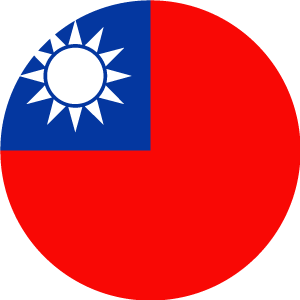Keyword Search Result
[Keyword] semiconductor(225hit)
1-20hit(225hit)128 Gbit/s Operation of AXEL with Energy Efficiency of 1.5 pJ/bit for Optical Interconnection Open Access
Wataru KOBAYASHI Shigeru KANAZAWA Takahiko SHINDO Manabu MITSUHARA Fumito NAKAJIMA
- INVITED PAPER
- Pubricized:
- 2023/06/05
- Vol:
- E106-C No:11
- Page(s):
- 732-738
We evaluated the energy efficiency per 1-bit transmission of an optical light source on InP substrate to achieve optical interconnection. A semiconductor optical amplifier (SOA) assisted extended reach EADFB laser (AXEL) was utilized as the optical light source to enhance the energy efficiency compared to the conventional electro-absorption modulator integrated with a DFB laser (EML). The AXEL has frequency bandwidth extendibility for operation of over 100Gbit/s, which is difficult when using a vertical cavity surface emitting laser (VCSEL) without an equalizer. By designing the AXEL for low power consumption, we were able to achieve 64-Gbit/s, 1.0pJ/bit and 128-Gbit/s, 1.5pJ/bit operation at 50°C with the transmitter dispersion and eye closure quaternary of 1.1dB.
Encouraging Innovation in Analog IC Design Open Access
- INVITED PAPER
- Pubricized:
- 2023/08/01
- Vol:
- E106-C No:10
- Page(s):
- 516-520
Recent years have seen a decline in the art of analog IC design even though analog interface and analog signal processing remain just as essential as ever. While there are many contributing factors, four specific pressures which contribute the most to the loss of creativity and innovation within analog practice are examined: process evolution, risk aversion, digitally assisted analog, and corporate culture. Despite the potency of these forces, none are found to be insurmountable obstacles to reinvigorating the industry. A more creative future is within our reach.
Contact Pad Design Considerations for Semiconductor Qubit Devices for Reducing On-Chip Microwave Crosstalk
Kaito TOMARI Jun YONEDA Tetsuo KODERA
- BRIEF PAPER
- Pubricized:
- 2023/02/20
- Vol:
- E106-C No:10
- Page(s):
- 588-591
Reducing on-chip microwave crosstalk is crucial for semiconductor spin qubit integration. Toward crosstalk reduction and qubit integration, we investigate on-chip microwave crosstalk for gate electrode pad designs with (i) etched trenches between contact pads or (ii) contact pads with reduced sizes. We conclude that the design with feature (ii) is advantageous for high-density integration of semiconductor qubits with small crosstalk (below -25 dB at 6 GHz), favoring the introduction of flip-chip bonding.
Single-Power-Supply Six-Transistor CMOS SRAM Enabling Low-Voltage Writing, Low-Voltage Reading, and Low Standby Power Consumption Open Access
Tadayoshi ENOMOTO Nobuaki KOBAYASHI
- PAPER-Electronic Circuits
- Pubricized:
- 2023/03/16
- Vol:
- E106-C No:9
- Page(s):
- 466-476
We developed a self-controllable voltage level (SVL) circuit and applied this circuit to a single-power-supply, six-transistor complementary metal-oxide-semiconductor static random-access memory (SRAM) to not only improve both write and read performances but also to achieve low standby power and data retention (holding) capability. The SVL circuit comprises only three MOSFETs (i.e., pull-up, pull-down and bypass MOSFETs). The SVL circuit is able to adaptively generate both optimal memory cell voltages and word line voltages depending on which mode of operation (i.e., write, read or hold operation) was used. The write margin (VWM) and read margin (VRM) of the developed (dvlp) SRAM at a supply voltage (VDD) of 1V were 0.470 and 0.1923V, respectively. These values were 1.309 and 2.093 times VWM and VRM of the conventional (conv) SRAM, respectively. At a large threshold voltage (Vt) variability (=+6σ), the minimum power supply voltage (VMin) for the write operation of the conv SRAM was 0.37V, whereas it decreased to 0.22V for the dvlp SRAM. VMin for the read operation of the conv SRAM was 1.05V when the Vt variability (=-6σ) was large, but the dvlp SRAM lowered it to 0.41V. These results show that the SVL circuit expands the operating voltage range for both write and read operations to lower voltages. The dvlp SRAM reduces the standby power consumption (PST) while retaining data. The measured PST of the 2k-bit, 90-nm dvlp SRAM was only 0.957µW at VDD=1.0V, which was 9.46% of PST of the conv SRAM (10.12µW). The Si area overhead of the SVL circuits was only 1.383% of the dvlp SRAM.
Noise Suppression in SiC-MOSFET Body Diode Turn-Off Operation with Simple and Robust Gate Driver
Hiroshi SUZUKI Tsuyoshi FUNAKI
- PAPER-Semiconductor Materials and Devices
- Pubricized:
- 2022/06/14
- Vol:
- E105-C No:12
- Page(s):
- 750-760
SiC-MOSFETs are being increasingly implemented in power electronics systems as low-loss, fast switching devices. Despite the advantages of an SiC-MOSFET, its large dv/dt or di/dt has fear of electromagnetic interference (EMI) noise. This paper proposes and demonstrates a simple and robust gate driver that can suppress ringing oscillation and surge voltage induced by the turn-off of the SiC-MOSFET body diode. The proposed gate driver utilizes the channel leakage current methodology (CLC) to enhance the damping effect by elevating the gate-source voltage (VGS) and inducing the channel leakage current in the device. The gate driver can self-adjust the timing of initiating CLC operation, which avoids an increase in switching loss. Additionally, the output voltage of the VGS elevation circuit does not need to be actively controlled in accordance with the operating conditions. Thus, the circuit topology is simple, and ringing oscillation can be easily attenuated with fixed circuit parameters regardless of operating conditions, minimizing the increase in switching loss. The effectiveness and versatility of proposed gate driver were experimentally validated for a wide range of operating conditions by double and single pulse switching tests.
Sputtering Gas Pressure Dependence on the LaBxNy Insulator Formation for Pentacene-Based Back-Gate Type Floating-Gate Memory with an Amorphous Rubrene Passivation Layer
Eun-Ki HONG Kyung Eun PARK Shun-ichiro OHMI
- PAPER
- Pubricized:
- 2022/06/27
- Vol:
- E105-C No:10
- Page(s):
- 589-595
In this research, the effect of Ar/N2-plasma sputtering gas pressure on the LaBxNy tunnel and block layer was investigated for pentacene-based floating-gate memory with an amorphous rubrene (α-rubrene) passivation layer. The influence of α-rubrene passivation layer for memory characteristic was examined. The pentacene-based metal/insulator/metal/insulator/semiconductor (MIMIS) diode and organic field-effect transistor (OFET) were fabricated utilizing N-doped LaB6 metal layer and LaBxNy insulator with α-rubrene passivation layer at annealing temperature of 200°C. In the case of MIMIS diode, the leakage current density and the equivalent oxide thickness (EOT) were decreased from 1.2×10-2 A/cm2 to 1.1×10-7 A/cm2 and 3.5 nm to 3.1 nm, respectively, by decreasing the sputtering gas pressure from 0.47 Pa to 0.19 Pa. In the case of floating-gate type OFET with α-rubrene passivation layer, the larger memory window of 0.68 V was obtained with saturation mobility of 2.2×10-2 cm2/(V·s) and subthreshold swing of 199 mV/dec compared to the device without α-rubrene passivation layer.
Preparation Copper Sulfide Nanoparticles by Laser Ablation in Liquid and Optical Properties
Kazuki ISODA Ryuga YANAGIHARA Yoshitaka KITAMOTO Masahiko HARA Hiroyuki WADA
- BRIEF PAPER-Ultrasonic Electronics
- Pubricized:
- 2021/02/08
- Vol:
- E104-C No:8
- Page(s):
- 390-393
Copper sulfide nanoparticles were successfully prepared by laser ablation in liquid. CuS powders in deionized water were irradiated with nanosecond-pulsed laser (Nd:YAG, SHG) to prepare nanoparticles. Prepared nanoparticles were investigated by scanning electron microscopy (SEM), dynamic light scattering (DLS) and fluorospectrometer. According to the results of SEM and DLS, the primary and secondary particle size was decreased with the increase in laser fluence of laser ablation in liquid. The ratio of Cu and S of prepared nanoparticles were not changed. The absorbance of prepared copper sulfide nanoparticles in water was increased with the increase in laser fluence.
Reach Extension of 10G-EPON Upstream Transmission Using Distributed Raman Amplification and SOA
Ryo IGARASHI Masamichi FUJIWARA Takuya KANAI Hiro SUZUKI Jun-ichi KANI Jun TERADA
- PAPER
- Pubricized:
- 2020/06/08
- Vol:
- E103-B No:11
- Page(s):
- 1257-1264
Effective user accommodation will be more and more important in passive optical networks (PONs) in the next decade since the number of subscribers has been leveling off as well and it is becoming more difficult for network operators to keep sufficient numbers of maintenance workers. Drastically reducing the number of small-scale communication buildings while keeping the number of accommodated users is one of the most attractive solutions to meet this situation. To achieve this, we propose two types of long-reach repeater-free upstream transmission configurations for PON systems; (i) one utilizes a semiconductor optical amplifier (SOA) as a pre-amplifier and (ii) the other utilizes distributed Raman amplification (DRA) in addition to the SOA. Our simulations assuming 10G-EPON specifications and transmission experiments on a 10G-EPON prototype confirm that configuration (i) can add a 17km trunk fiber to a normal PON system with 10km access reach and 1 : 64 split (total 27km reach), while configuration (ii) can further expand the trunk fiber distance to 37km (total 47km reach). Network operators can select these configurations depending on their service areas.
All-Optical Modulation Format Conversion and Applications in Future Photonic Networks Open Access
Ken MISHINA Daisuke HISANO Akihiro MARUTA
- INVITED PAPER
- Vol:
- E102-C No:4
- Page(s):
- 304-315
A number of all-optical signal processing schemes based on nonlinear optical effects have been proposed and demonstrated for use in future photonic networks. Since various modulation formats have been developed for optical communication systems, all-optical converters between different modulation formats will be a key technology to connect networks transparently and efficiently. This paper reviews our recent works on all-optical modulation format conversion technologies in order to highlight the fundamental principles and applications in variety of all-optical signal processing schemes.
Transistor Characteristics of Single Crystalline C8-BTBT Grown in Coated Liquid Crystal Solution on Photo-Alignment Films
Risa TAKEDA Yosei SHIBATA Takahiro ISHINABE Hideo FUJIKAKE
- BRIEF PAPER
- Vol:
- E101-C No:11
- Page(s):
- 884-887
We examined single crystal growth of benzothienobenzothiophene-based organic semiconductors by solution coating method using liquid crystal and investigated its electrical characteristics. As the results, we revealed that the averaged mobility in the saturation region reached 2.08 cm2/Vs along crystalline b-axis, and 1.08 cm2/Vs along crystalline a-axis.
Growth Mechanism of Polar-Plane-Free Faceted InGaN Quantum Wells Open Access
Yoshinobu MATSUDA Mitsuru FUNATO Yoichi KAWAKAMI
- INVITED PAPER
- Vol:
- E101-C No:7
- Page(s):
- 532-536
The growth mechanisms of three-dimensionally (3D) faceted InGaN quantum wells (QWs) on (=1=12=2) GaN substrates are discussed. The structure is composed of (=1=12=2), {=110=1}, and {=1100} planes, and the cross sectional shape is similar to that of 3D QWs on (0001). However, the 3D QWs on (=1=12=2) and (0001) show quite different inter-facet variation of In compositions. To clarify this observation, the local thicknesses of constituent InN and GaN on the 3D GaN are fitted with a formula derived from the diffusion equation. It is suggested that the difference in the In incorporation efficiency of each crystallographic plane strongly affects the surface In adatom migration.
Chirp Control of Semiconductor Laser by Using Hybrid Modulation Open Access
Mitsunari KANNO Shigeru MIEDA Nobuhide YOKOTA Wataru KOBAYASHI Hiroshi YASAKA
- INVITED PAPER
- Vol:
- E101-C No:7
- Page(s):
- 561-565
Frequency chirp of a semiconductor laser is controlled by using hybrid modulation, which simultaneously modulates intra-cavity loss and injection current to the laser. The positive adiabatic chirp of injection-current modulation is compensated with the negative adiabatic chirp created by intra-cavity-loss modulation, which enhances the chromatic-dispersion tolerance of the laser. A proof-of-concept transmission experiment confirmed that the hybrid modulation laser has a larger dispersion tolerance than conventional directly modulated lasers due to the negative frequency chirp originating from intra-cavity-loss modulation.
Quantum Dot Light-Emitting Diode with Ligand-Exchanged ZnCuInS2 Quantum Dot Open Access
Takeshi FUKUDA Masatomo HISHINUMA Junya MAKI Hironao SASAKI
- INVITED PAPER
- Vol:
- E100-C No:11
- Page(s):
- 943-948
Nowadays, semiconductor quantum dots have attracted intense attention as emissive materials for light-emitting diodes, due to their high photoluminescence quantum yield and the controllability of their photoluminescence spectrum by changing the core diameter. In general, semiconductor quantum dots contain large amounts of organic ligands around the core/shell structure to obtain dispersibility in solution, which leads to solution processability of the semiconductor quantum dot. Furthermore, organic ligands, such as straight alkyl chains, are generally insulating materials, which affects the carrier transport in thin-film light-emitting diodes. However, a detailed investigation has not been performed yet. In this paper, we investigated the luminance characteristics of quantum-dot light-emitting diodes containing ZnCuInS2 quantum dots with different carbon chain lengths of alkyl thiol ligands as emitting layers. By evaluating the CH2/CH3 ratio from Fourier-transform infrared spectra and thermal analysis, it was found that approximately half of the oleylamine ligands were converted to alkyl thiol ligands, and the evaporation temperature increased with increasing carbon chain length of the alkyl thiol ligands based on thermogravimetric analysis. However, the photoluminescence quantum yield and the spectral shape were almost the same, even after the ligand-exchange process from the oleylamine ligand to the alkyl thiol ligand. The peak wavelength of the photoluminescence spectra and the photoluminescence quantum yield were approximately 610 nm and 10%, respectively, for all samples. In addition, the surface morphology of spin coated ZnCuInS2 quantum-dot layers did not change after the ligand-exchange process, and the root-mean-square roughness was around 1 nm. Finally, the luminance efficiency of an inverted device structure increased with decreasing carbon chain length of the alkyl thiol ligands, which were connected around the ZnCuInS2 quantum dots. The maximum luminance and current efficiency were 86 cd/m2 and 0.083 cd/A, respectively.
Advantages of SOA Assisted Extended Reach EADFB Laser (AXEL) for Operation at Low Power and with Extended Transmission Reach Open Access
Wataru KOBAYASHI Naoki FUJIWARA Takahiko SHINDO Yoshitaka OHISO Shigeru KANAZAWA Hiroyuki ISHII Koichi HASEBE Hideaki MATSUZAKI Mikitaka ITOH
- INVITED PAPER
- Vol:
- E100-C No:10
- Page(s):
- 759-766
We propose a novel structure that can reduce the power consumption and extend the transmission distance of an electro-absorption modulator integrated with a DFB (EADFB) laser. To overcome the trade-off relationship of the optical loss and chirp parameter of the EA modulator, we integrate a semiconductor optical amplifier (SOA) with an EADFB laser. With the proposed SOA assisted extended reach EADFB laser (AXEL) structure, the LD and SOA sections are operated by an electrically connected input port. We describe a design for AXEL that optimizes the LD and SOA length ratio when their total operation current is 80mA. By using the designed AXEL, the power consumption of a 10-Gbit/s, 1.55-µm EADFB laser is reduced by 1/2 and at the same time the transmission distance is extended from 80 to 100km.
Increasing Splitting Ratio of Extended-Reach WDM/TDM-PON by Using Central Office Sited Automatic Gain Controlled SOAs
- PAPER-Fiber-Optic Transmission for Communications
- Pubricized:
- 2017/02/02
- Vol:
- E100-B No:8
- Page(s):
- 1388-1396
To drastically increase the splitting ratio of extended-reach (40km span) time- and wavelength-division multiplexed passive optical networks (WDM/TDM-PONs), we modify the gain control scheme of our automatic gain controlled semiconductor optical amplifiers (AGC-SOAs) that were developed to support upstream transmission in long-reach systems. While the original AGC-SOAs are located outside the central office (CO) as repeaters, the new AGC-SOAs are located inside the CO and connected to each branch of an optical splitter in the CO. This arrangement has the potential to greatly reduce the costs of CO-sited equipment as they are shared by many more users if the new gain control scheme works properly even when the input optical powers are low. We develop a prototype and experimentally confirm its effectiveness in increasing the splitting ratio of extended-reach systems to 512.
Extraction of Energy Distribution of Electrons Trapped in Silicon Carbonitride (SiCN) Charge Trapping Films
Sheikh Rashel Al AHMED Kiyoteru KOBAYASHI
- PAPER-Electronic Materials
- Vol:
- E100-C No:7
- Page(s):
- 662-668
The electron retention characteristics of memory capacitors with blocking oxide-silicon carbonitride (SiCN)-tunnel oxide stacked films were investigated for application in embedded charge trapping nonvolatile memories (NVMs). Long-term data retention in the SiCN memory capacitors was estimated to be more than 10 years at 85 °C. We presented an improved method to analyze the energy distribution of electron trap states numerically. Using the presented analytical method, electron trap states in the SiCN film were revealed to be distributed from 0.8 to 1.3 eV below the conduction band edge in the SiCN band gap. The presence of energetically deep trap states leads us to suggest that the SiCN dielectric films can be employed as the charge trapping film of embedded NVMs.
Design of High-ESD Reliability in HV Power pLDMOS Transistors by the Drain-Side Isolated SCRs
Shen-Li CHEN Yu-Ting HUANG Yi-Cih WU
- PAPER
- Vol:
- E100-C No:5
- Page(s):
- 446-452
Improving robustness in electrostatic discharge (ESD) protection by inserting drain-side isolated silicon-controlled rectifiers (SCRs) in a high-voltage (HV) p-channel lateral-diffused MOSFET (pLDMOS) device was investigated in this paper. Additionally, the effects of anti-ESD reliability in the HV pLDMOS transistors provided by this technique were evaluated. From the experimental data, it was determined that the holding voltage (Vh) values of the pLDMOS with an embedded npn-arranged SCR and discrete thin-oxide (OD) layout on the cathode side increased as the parasitic SCR OD row number decreased. Moreover, the trigger voltage (Vt1) and the Vh values of the pLDMOS with a parasitic pnp-arranged SCR and discrete OD layout on the drain side fluctuated slightly as the SCR OD-row number decreased. Furthermore, the secondary breakdown current (It2) values (i.e., the equivalent ESD-reliability robustness) of all pLDMOS-SCR npn-arranged types increased (>408.4%) to a higher degree than those of the pure pLDMOS, except for npn-DIS_3 and npn-DIS_2, which had low areas of SCRs. All pLDMOS-SCR pnp-arranged types exhibited an increase of up to 2.2A-2.4A, except for the pnp_DIS_3 and pnp_DIS_2 samples; the pnp_DIS_91 increased by approximately 2000.9% (249.1%), exhibiting a higher increase than that of the reference pLDMOS (i.e., the corresponding pnp-stripe type). The ESD robustness of the pLDMOS-SCR pnp-arranged type and npn-arranged type with a discrete OD layout on the SCR cathode side was greater than that of the corresponding pLDMOS-SCR stripe type and a pure pLDMOS, particularly in the pLDMOS-SCR pnp-arranged type.
Dry Etching Technologies of Optical Device and III-V Compound Semiconductors Open Access
Ryuichiro KAMIMURA Kanji FURUTA
- INVITED PAPER
- Vol:
- E100-C No:2
- Page(s):
- 150-155
Dry etching is one of the elemental technologies for the fabrication of optical devices. In order to obtain the desired shape using the dry etching process, it is necessary to understand the reactivity of the materials being used to plasma. In particular, III-V compound semiconductors have a multi-layered structure comprising a plurality of elements and thus it is important to first have a full understanding of the basic trends of plasma dry etching, the plasma type and the characteristics of etching plasma sources. In this paper, III-V compound semiconductor etching for use in light sources such as LDs and LEDs, will be described. Glass, LN and LT used in the formation of waveguides and MLA will be introduced as well. And finally, the future prospects of dry etching will be described briefly.
Equivalent Circuit Modeling of a Semiconductor-Integrated Bow-Tie Antenna for the Physical Interpretation of the Radiation Characteristics in the Terahertz Region
Hirokazu YAMAKURA Michihiko SUHARA
- PAPER-Semiconductor Materials and Devices
- Vol:
- E99-C No:12
- Page(s):
- 1312-1322
We have derived the physics-based equivalent circuit model of a semiconductor-integrated bow-tie antenna (BTA) for expressing its impedance and radiation characteristics as a terahertz transmitter. The equivalent circuit branches and components, consisting of 16 RLC parameters are determined based on electromagnetic simulations. All the values of the circuit elements are identified using the particle swarm optimization (PSO) that is one of the modern multi-purpose optimization methods. Moreover, each element value can also be explained by the structure of the semiconductor-integrated BTA, the device size, and the material parameters.
Development of Zinc Oxide Spatial Light Modulator for High-Yield Speckle Modulation Open Access
Naoya TATE Tadashi KAWAZOE Shunsuke NAKASHIMA Wataru NOMURA Motoichi OHTSU
- INVITED PAPER
- Vol:
- E99-C No:11
- Page(s):
- 1264-1270
In order to realize high-yield speckle modulation, we developed a novel spatial light modulator using zinc oxide single crystal doped with nitrogen ions. The distribution of dopants was optimized to induce characteristic optical functions by applying an annealing method developed by us. The device is driven by a current in the in-plane direction, which induces magnetic fields. These fields strongly interact with the doped material, and the spatial distribution of the refractive index is correspondingly modulated via external control. Using this device, we experimentally demonstrated speckle modulation, and we discuss the quantitative superiority of our approach.




















